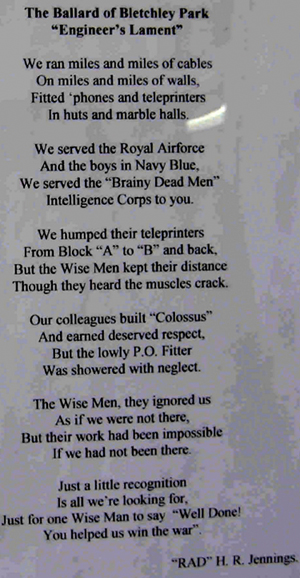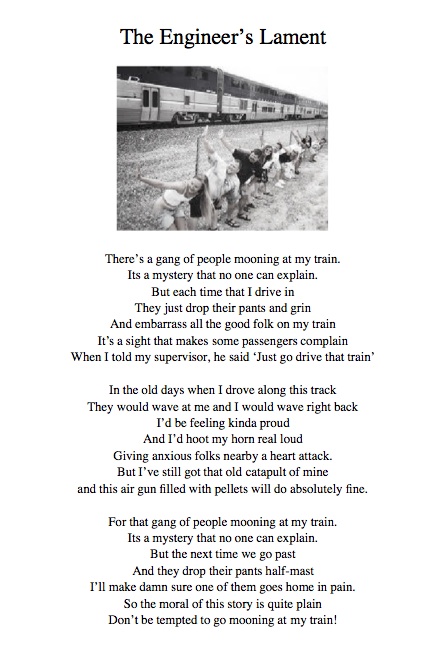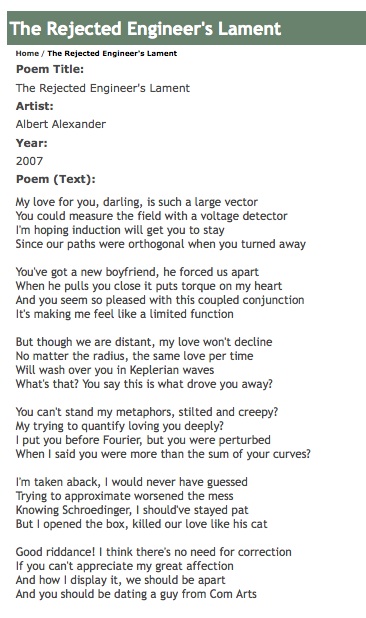Engineers have a lot of reasons to be miserable. I mean, they spend their precious time designing sophisticated and super-clever technological solutions to problems faced by people who hardly ever grant them the recognition they deserve. Take this piece of poetry, posted in a display case at Bletchley Park military research facility – the place where artificial intelligence pioneer Alan Turing and colleagues created Colossus, the very first electronic computer.
Most likely inspired by pre-existing seamen’s ballads written by ‘marine engineers’ operating ships and cargos, this lament was first published by Henry Jennings, a post office engineer, in the Bedford Telephone Area newsletter in 1950. Of course there’s a lot to be said about recognition. Philosopher Axel Honneth maintains mutual acknowledgement of the existence of social actors is what makes society work (cf. his seminal essay The Struggle for Recognition: The Moral Grammar of Social Conflicts, Polity Press, 1996).
Quite understandably engineers want to be appreciated for what they do. Problem is, when a system works, engineers’ activity becomes invisible. And when it becomes visible again, it’s usually because something’s gone wrong… There’s a lot of interesting books about this ‘vanishing effect’ of engineering, from Bruno Latour’s Paris: Invisible City (La Découverte, 1998) to Stephen Graham’s Disrupted Cities: When Infrastructure Fails (Routledge, 2009) – although they mostly deal with civil engineering.
Of course, the quest for recognition implies identifying significant classes of actors providing social validation to the engineers, like the one including clients, employers and commissioning bodies having an oversight of their work. In engineering lore, this class is best personified by The Administrator, the overdemanding and manipulative character in the popular video game Team Fortress:
Another group of particularly problematic persons, are of course end-users. If in dealing with The Administrator type, engineers have to manage expectations and requirements before the project begins, end-users are sometimes regarded as tornadoes of vocal dissatisfaction and contradictory preferences ravaging the output of the engineers’ hard work. Recognition turns into frustration, and the dialectic between engineers and their users often becomes confrontational, as both recent European protests against high-speed rail and this bawdy poem by Vladimir O’Leary seem to demonstrate.
A final note on the interpersonal dimension of recognition. Axel Honneth insists that struggles between social actors are not only determined at the aggregate level, as conflicts between classes or abstract group interests. They are embedded in individual lives, as they tend to become moral clashes between persons. In this sense, even the way an engineer experiences and expresses verbally a relationship breakup might convey the need to affirm an ‘technological-savvy identity’ – as this Rejected mechanical engineer’s lament attests.


